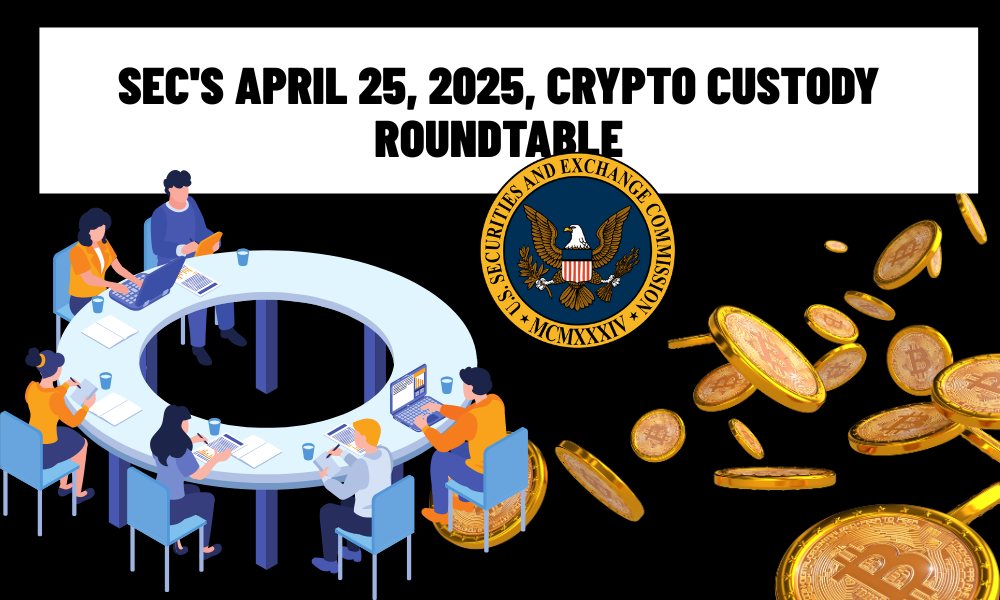The U.S. Securities and Exchange Commission (SEC) is reportedly set to hold its second meeting focused on cryptocurrencies on April 25, signaling continued regulatory scrutiny of the digital asset space. As the crypto market evolves, stakeholders—including investors, developers, and exchanges—are eager to understand the implications of this meeting. This article dives into the key details, potential discussion points, and what this means for the blockchain and cryptocurrency industry.
Background: SEC’s Stance on Cryptocurrency Regulation
The SEC, under the leadership of Chairman Gary Gensler, has maintained a firm stance on regulating cryptocurrencies. Gensler has repeatedly emphasized that many digital assets may qualify as securities under the Howey Test, subjecting them to existing securities laws. The agency’s enforcement-heavy approach has led to high-profile lawsuits, such as the ongoing case against Ripple Labs over XRP, and increased oversight of major crypto exchanges like Coinbase and Binance.

The first SEC meeting on cryptocurrencies (date unspecified in the source) likely laid the groundwork for addressing critical issues, including investor protection, market manipulation, and the classification of digital assets. The upcoming April 25 meeting is expected to build on these discussions, potentially shaping the regulatory landscape for years to come.
What to Expect from the April 25 Meeting
While specific details about the agenda remain undisclosed, the SEC’s recent actions and public statements provide clues about the likely topics of discussion. Below are the key areas that may dominate the meeting:
Clarifying the Definition of Securities in Crypto
The SEC has consistently argued that many tokens, beyond Bitcoin and Ethereum, exhibit characteristics of securities. This meeting could focus on refining the criteria for determining whether a token is a security, addressing the ambiguity that has frustrated developers and issuers. A clearer framework could reduce litigation risks but may also impose stricter compliance requirements on Initial Coin Offerings (ICOs) and Decentralized Finance (DeFi) projects.
Regulation of Crypto Exchanges
Crypto exchanges have been a focal point for the SEC, with Gensler criticizing platforms for listing unregistered securities. The meeting may explore ways to bring centralized and decentralized exchanges under stricter oversight, including registration as securities exchanges or broker-dealers. This could have significant implications for platforms like Coinbase, Kraken, and Uniswap.
Investor Protection Measures
The collapse of platforms like FTX and Terra-Luna underscored the risks in the crypto market. The SEC is likely to discuss enhanced investor protection measures, such as mandatory disclosures, custody requirements, and anti-fraud provisions. These steps aim to safeguard retail investors while fostering trust in the market.
Stablecoins and Systemic Risks
Stablecoins, such as Tether (USDT) and USD Coin (USDC), have attracted regulatory attention due to their role in facilitating crypto trading and potential impact on financial stability. The SEC may coordinate with other agencies, like the Financial Stability Oversight Council (FSOC), to address risks posed by stablecoins, including reserve transparency and redemption mechanisms.
Coordination with Global Regulators
As cryptocurrency is a global market, the SEC may discuss aligning its policies with international frameworks, such as the European Union’s Markets in Crypto-Assets (MiCA) regulation. Harmonization could reduce regulatory arbitrage and create a more predictable environment for cross-border blockchain projects.
Why This Meeting Matters
For crypto investors, the April 25 meeting could influence market sentiment and price volatility. Regulatory clarity—or lack thereof—often drives market reactions, as seen in past SEC announcements. For example, Bitcoin and altcoins have experienced sharp price swings following news of enforcement actions or regulatory proposals.
Blockchain developers and businesses face even higher stakes. A stricter regulatory framework could increase compliance costs and limit innovation, particularly for smaller projects. Conversely, clear guidelines could attract institutional investment and legitimize the industry, fostering long-term growth.

Potential Market Implications
Historically, SEC actions have had a ripple effect across the crypto market. For instance:
-
Positive outcomes: If the meeting signals a balanced approach with clear guidelines, it could boost confidence, driving inflows into Bitcoin, Ethereum, and layer-1 protocols like Solana and Cardano.
-
Negative outcomes: Heavy-handed regulations or enforcement actions could trigger sell-offs, particularly for tokens deemed securities.
Traders and investors should monitor post-meeting announcements closely, as they may provide insights into the SEC’s priorities and enforcement timeline.
How to Prepare as an Investor or Developer
-
Follow reputable sources like CoinDesk, Bloomberg, or the SEC’s official website for updates on the meeting’s outcomes.
-
nvestors can mitigate regulatory risks by diversifying across asset classes, including non-security tokens like Bitcoin and Ethereum.
-
Developers and businesses should consult legal experts to assess whether their tokens or platforms comply with securities laws.
-
Industry stakeholders can advocate for innovation-friendly regulations by participating in public comment periods or industry associations like the Blockchain Association.
The SEC’s second cryptocurrency meeting on April 25 is a pivotal moment for the blockchain and crypto industry. As the agency seeks to balance investor protection with market innovation, the outcomes could redefine how digital assets are regulated in the U.S. Whether you’re an investor, developer, or enthusiast, staying informed and proactive will be critical in navigating the evolving regulatory landscape.
For the latest updates on this meeting and its impact, bookmark this page and follow trusted crypto news outlets. The future of blockchain innovation depends on how regulators and the industry collaborate to create a fair and transparent ecosystem.

RELATED POSTS
What is blockchain technology and How does it work?
What is blockchain technology and...
Peer-to-Peer Learning Unlocked: Harnessing Blockchain for Collaborative Education
Blockchain's role in peer-to-peer learning:...
Mapping Opportunities with Funding Rate Heatmap
In the fast-paced trading world,...
3 surprising effects on Pebonk when Pavel Durov was arrested
Pebonk has witnessed some unexpected...
BulbaSwap Airdrop: A unique investment opportunity in DeFi
BulbaSwap, a decentralized exchange (DEX)...
What is Karak? Guide to joining Restaking
In the dynamic cryptocurrency market...
Kamino Airdrop – Investment Opportunities in DeFi on Solana
Kamino airdrop offers a potential...
Why Solana Layer 2 Sonic is the Key to High-Performance Gaming
Solana Layer 2 Sonic is...
Blockchain Technology News Update – HOT Trends for 2025
Blockchain technology news is abuzz...
What is a Bullish Run? Exploring Its Impact on Investment Strategies
What is a Bullish Run?...
What is KYC in Crypto? The Key to safer and transparent trading
What is KYC in Crypto...
Sonic SVM Airdrop: Eligibility, Timeline, and How to Get Involved
The Sonic SVM Airdrop presents...
SEC to Host Second Crypto Meeting on April 25
The U.S. Securities and Exchange...
Exploring the Growth of the Blockchain Technology Market in 2024
The blockchain technology market is...
Guide to voting in Project Catalyst
Ready to help build Cardano?...
What are the three advantages of using blockchain technology
Curious about “What are the...